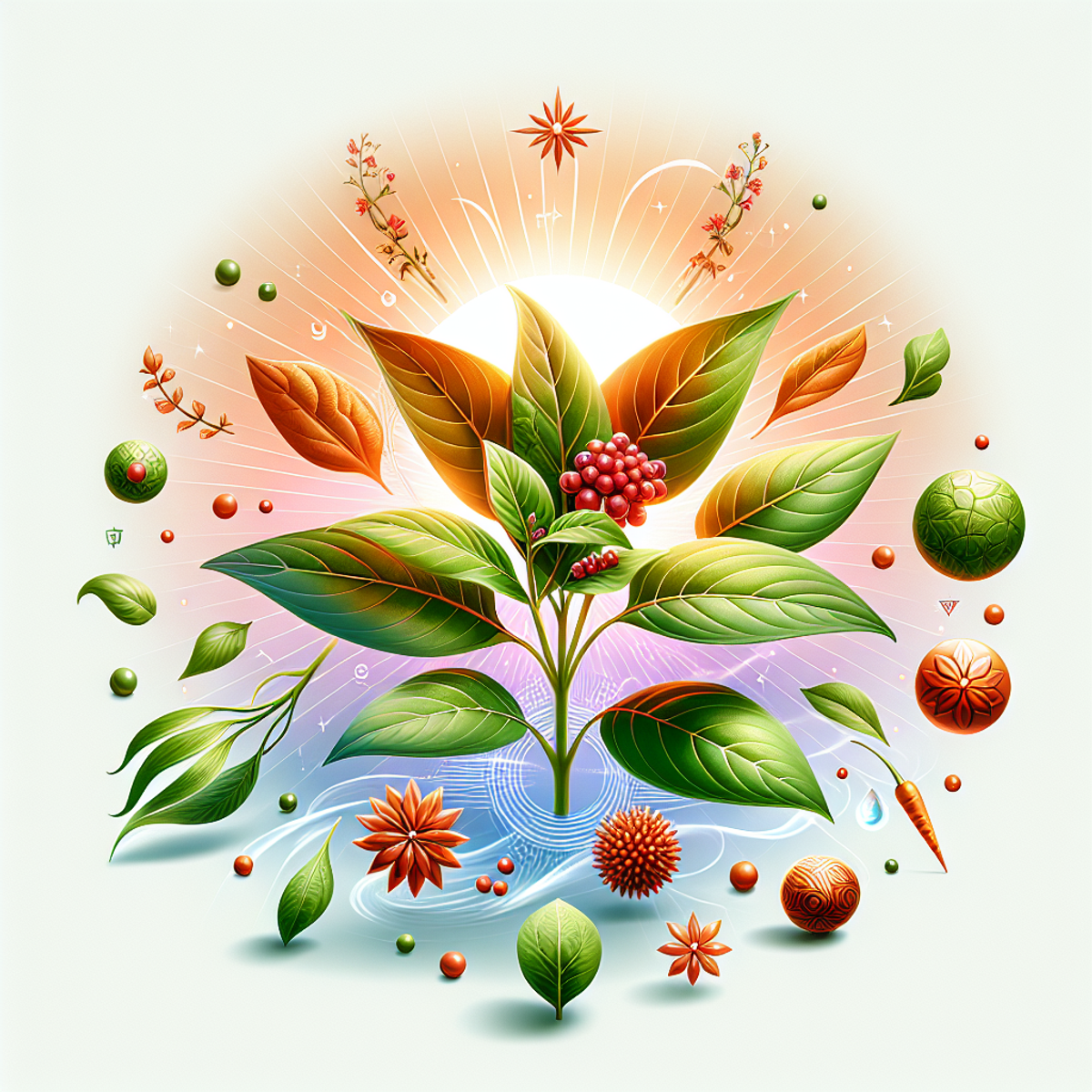
The story of Ashwagandha
Share
Why has Ashwagandha have always been so popular? The story reveals

The fascinating story of Ashwagandha
Ashwagandha's origin and cultural meaning
Ashwagandha, also known as Withhania somnifera, Indian ginseng, Winter cherry or Sleepberry, is a plant with a remarkable story and cultural importance. It comes from the dry regions of India, the Middle East and North Africa and has its roots deep in Ayurvedic medicine.
The cultural importance of Ashwagandha is shown in their broad application in traditional healing art. In Ayurvedic medicine, this plant has been valued for its versatile healing properties for thousands of years.
The geographical origin of Ashwagandha and its impact on their popularity
Ashwagandha's geographical origin has had a significant impact on its popularity. Their origin lies in the dry areas of India, the Middle East and North Africa, where it thrives under extreme conditions. This robustness has contributed to the fact that it can be grown in many different climate zones, which contributes to its widespread popularity.
At the same time, Ashwagandha's geographical origin contributed to the mystical aura that surrounds it. It is often referred to as "Indian ginseng" - a sign of the high recognition and deep respect it enjoys in Ayurvedic medicine.
The role of Ashwagandha in traditional Ayurvedic medicine
Ashwagandha plays a central role in Ayurvedic medicine. It is highly valued for its diverse healing properties - from its ability to promote general well -being, to support in sleep disorders.
The plant is also in the oldest Indian texts, including the Rigveda, mentioned. Their use in these sacred texts underlines the importance that Ashwagandha has always had in traditional medicine.
The use of Ashwagandha in Ayurvedic medicine is another reason for its ongoing popularity. It is not only used as a medicinal herb, but also as a dietary supplement and part of skin care products. Your applications are almost endless - proof of your versatility and effectiveness.
Historical mentions and mythological connections
Ashwagandha, even as Withhania somnifera, Indian ginseng, Winter cherry or Sleepberry known, has a rich history that is deeply rooted in ancient Indian culture.
Introduction to Ashwagandha and its historical background
The first known mention of Ashwagandha can be found in the old Indian texts of the Rigveda. The Vedic writings, which were written more than 3000 years ago, praise the versatile use of Ashwagandha as a remedy for a variety of symptoms. Similar mentions can also be found in other important Ayurvedic texts such as the Charaka Samhita and the Sushruta Samhita.
Legends and stories about the discovery of Ashwagandha
There are many legends and stories that surround the discovery of Ashwagandha. Such a legend states that a wise man once had a vision during a meditation in which the divine properties of the plant were revealed to him. Since then she has been viewed as a holy herb and worshiped for her medical properties.
Ashwagandha's importance in ancient Indian culture is undeniable. Their versatile use in the course of history underlines its importance in the context of Ayurvedic medicine.
In the following sections we will go into deeper on the impressive properties and advantages of Ashwagandha and how you can grow and procure high -quality Ashwagandha.
The impressive properties and advantages of Ashwagandha
Ashwagandha, also known as Withania Somnifera, is a plant that not only impresses with its long history in Ayurvedic medicine, but also with its unique botanical characteristics and health advantages.
The botanical features of Ashwagandha:
- Robust roots: The plant is particularly known for its strong, fleshy roots.
- Small flowers: Ashwagandha blooms with small, bell -shaped flowers.
- Colorful berries: After flowering, the plant develops orange to red berries.
These botanical properties are not only aesthetically appealing, but also signs of the robust nature of the plant, which enables it to thrive in dry conditions.
Promotion of physical well -being:
Ashwagandha has been used for centuries to promote general physical well -being. Their adaptogenic properties support the body in coping with stress and help you to feel more energetic and more powerful.
Influence on healthy sleep:
One of the most remarkable aspects of Ashwagandha is her positive influence on sleep. Studies indicate that taking Ashwagandha can contribute to the treatment of sleep disorders such as insomnia. The calming effect of the plant helps to promote calmer and relaxing sleep.
Ashwagandha make these diverse advantages an estimated part of the daily diet of many people who rely on natural remedies.
Cultivation and procurement of high -quality Ashwagandha
The successful Cultivation of Ashwagandha requires a deep understanding of the environmental conditions under which this plant thrives best. Especially in dry and subtropical regions Finds Ashwagandha ideal conditions to grow into a strong plant that is rich in active ingredients.
The best cultivation practices for Ashwagandha plants:
- Choice of location: Choose a location with full sunlight and well permeable soil that is slightly alkaline.
- Soil processing: Loose the soil thoroughly in front of the sowing to improve the drainage and prevent root rot.
- sowing: Sow the seeds in spring after the risk of frost is over.
- Water requirement: Pour regularly, but avoid waterlogging. A balanced water balance is crucial.
- fertilization: Use compost or organic fertilizers to ensure nutrient supply and promote growth.
Harvest and processing of Ashwagandha roots:
- Harvest time: Ideally, the harvest takes place about a year after sowing when the plants are mature and the roots have reached their full size.
- Harvesting technology: Gently dig around the root and remove it completely from the ground.
- Drying: Clean the roots and let them dry in a shady, airy place. This preserves the valuable ingredients.
- storage: Protect dried Ashwagandha roots in an airtight container to avoid moisture and loss of quality.
By cultivation in the right environment and careful harvest as well as processing, you ensure that your Ashwagandha plants have a high content of effective ingredients.
The importance of Ashwagandha in the modern world
Ashwagandha is experiencing a renaissance and its popularity in the modern world is obvious. This plant has established itself as a versatile natural alternative to traditional medication and is increasingly valued in the holistic medical practice.
- Holistic medical practice: Consumers and health experts recognize the importance of Ashwagandha for physical and mental well -being. It is often used as an adaptogen that helps to reduce stress and support the hormonal balance.
- Innovative products: The market offers an abundance of Ashwagandha products such as capsules, powder and teas. These products aim to optimally use the adaptogenic properties of the plant.
- additions: Dietary supplements with Ashwagandha content are popular with those who want to improve their performance and promote their sleep. The demand for natural and herbal additions increases steadily.
The modern applications of Ashwagandha reflect the growing awareness of health and well -being. They also show the trend towards natural alternatives in modern medicine. With its long history and the comprehensive health advantages, Ashwagandha remains an important element in today's wellness strategies.
